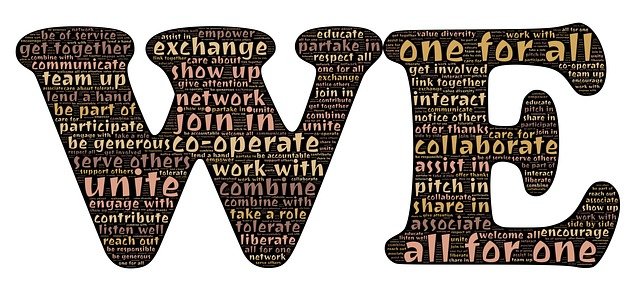Dr. Aimie Apigian recently offered a Trauma to Trust Masterclass in which she discussed the body’s response to trauma, ways to recognise if a relationship is causing trauma and ways to move from trauma in a relationship to trust. Aimie is a Preventative Medicine physician with Masters in Public Health and Biochemistry. She specialises as an addiction, trauma and attachment physician – a career that resulted from her desire to heal from own traumatic life experiences and attachment issues and to help other people to achieve healing and recovery. She shares her career story and her work with Guy Macpherson on the Trauma Therapist Project podcast. Her experience with foster-parenting led to her consuming interest in helping children experiencing pain and suffering from trauma.
On her YouTube© channel, Aimie provides videos where she discusses topics like addiction, trauma, nervous system, negative thinking, inflammation and emotional regulation. She draws heavily on her personal experience of adopting a son from her foster care – a child who was traumatised by his insecurity, constant mobility and uncertain future. She found that love and nurture and time together by themselves did not help to heal him – the manifestations of love themselves became a trigger for his trauma response.
The day Aimie’s six-year old adopted son told her that he would kill her the following day was the catalyst for a lifetime of study, research and specialisation in helping children and adults recover from trauma. To help her son, she researched multiple modalities including nutrition, somatic experiencing (developed by Dr. Peter Levine), and Neuro-Affective Touch. For other parents in a similar situation with a traumatised child, she created the not-for-profit organisation, Family Challenge Camps, that are designed to help families deal with trauma and attachment issues.
3 steps to the trauma response
Aimie drew on her training in the Instinctual Trauma Response Model to explain how the body responds to trauma. Initially when the body experiences a perceived threat (including a “trigger”), it goes into a startle response (envisage a deer in the wild hearing or smelling the presence of a lion). This is followed by the stress response which energises the fight/flight response.
When the stressor(s) are perceived as overwhelm (we sense we are unable to cope), the body adopts the freeze response which constitutes the “lowest energy state” (in comparison to the “high energy state” of the fight/flight response).
Recognising trauma created in a relationship
Aimie provides three ways to recognise if a relationship (that we are part of) is a source of trauma for us. At the foundational level, the early indicators relate to a lack of energy. So the first step is to check our bodily sensations – is the relationship energising or depleting us? This can be an early indicator of trauma in an emerging Controlling Relationship.
On the second level, is exploration of our thoughts about our relationship. Do we perceive that being in the relationship is too much and beyond us? Do we feel safe and supported? Are we wondering why we have built up a dependency in the relationship to make up for some personal deficiency?
The third indicator is how we feel health wise – are we constantly feeling sick in the relationship? Does the relationship “make us sick” (with worry, anxiety or fear, for example). Aimie reminds us that sometimes we can delude ourselves when our mind says “I love them” but our body gives us away through constant sickness.
3 step approach to releasing stored trauma
Aimie has developed a 3 step approach to assist people to release stored trauma. She argues that the release process requires certain actions completed in the right order. In fact, from her own experience and research, she has found that the order of the required steps is the reverse of the trauma creation process described in the previous section (startle, fight/flight/, freeze).
Aimie argues that the trauma release process involves (1) developing a personal sense of safety, (2) building a sense of support and (3) expansion where we begin to lead “the life we’ve always wanted”. She provides an explanation of the 3 step process in her publication, The Essential Sequence Guide: How to release stored trauma, that is available as a free e-book from her website, Trauma Healing Accelerated™.
Aimie offers specialised training for individuals who want to deal with trauma in a relationship in the form of a 21 Day Journey that provides a somatically-based process of addressing stored trauma in the body. Each of the three steps of trauma release are addressed by providing seven somatic exercises for each step (safety, support, expansion). Aimie and an online community provide the supportive relationships necessary to enable people to heal and recover. During the Trauma to Trust Masterclass, Aimie provided an experience of one of the somatic exercises designed to develop a sense of safety. It involved linking the stomach to the heart by placing one hand on each body part and exploring the nature of the felt connection (e.g., rejection, resistance, warmth, welcoming, disrupted, undulating).
Aimie provides other experiential and educational workshops, a certification program for practitioners and one-on-one coaching by a certified trauma-informed health coach. She is also the Creator and Host of the Biology of Trauma Summit.
Reflection
Each of us have had our own experience of personal trauma from challenging life events – whether a car accident; death of a child, spouse or parent; a relationship breakdown/breakup and/or divorce; loss of work through redundancy; chronic illness or cancer; loss of a home through fire or flood; adverse childhood experiences or a combination of these (or any other traumatising event).
Aimie and her colleagues provide a clear pathway for trauma release by focusing on the body and providing somatic healing. Her dedication to releasing trauma in others (whether parents, children or professionals) is a lifetime and whole-hearted commitment. She offers insights from her own traumatic life journey and in-depth study and research.
As we grow in mindfulness through somatic experiencing, meditation, connecting with nature and other mindfulness practices, we can develop greater self-awareness, a stronger sense of safety and support and build the confidence and creativity to explore our potential and life purpose.
________________________________
Image by Gerd Altmann from Pixabay
By Ron Passfield – Copyright (Creative Commons license, Attribution–Non Commercial–No Derivatives)
Disclosure: If you purchase a product through this site, I may earn a commission which will help to pay for the site, the associated Meetup group, and the resources to support the blog.









